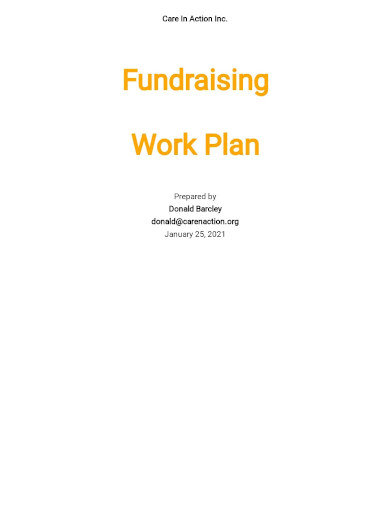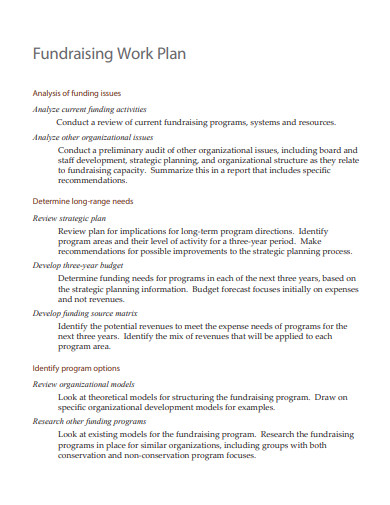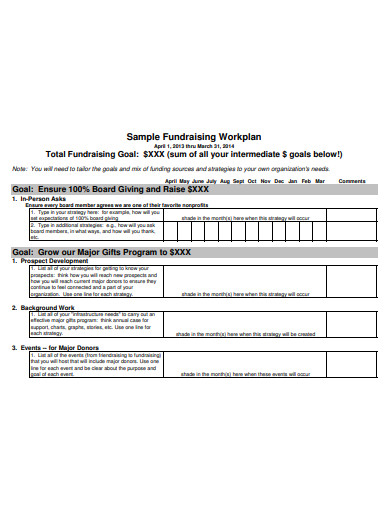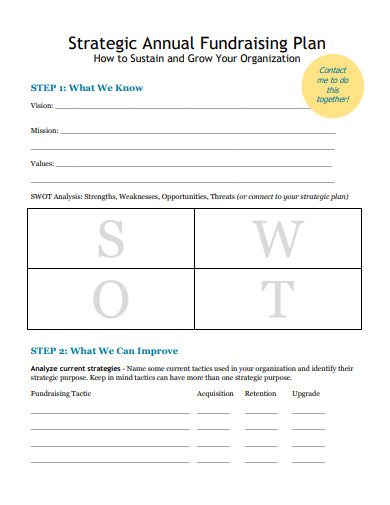Fundraising is a challenging, but critical aspect of keeping your nonprofit afloat. It’s what allows your organization to earn the funds needed to grow over time and help more people. As a professional fundraiser, whether you’re working with a brand-new nonprofit or an organization that’s been around for many years, you likely focus much of your energy and time on figuring out how to improve your fundraising strategy. For nonprofit organizations, fundraising is essential for continuing to make a difference and growing their impact over time. Since nonprofits’ goals will vary drastically based on a wide range of factors, fundraising campaigns naturally come in all shapes and sizes. However, as professional fundraisers will tell you, a concrete fundraising plan or roadmap is the common denominator across all successful fundraising campaigns. Simply put, without a solid strategy in place, the tasks of setting fundraising goals, identifying target donors, and developing outreach tactics become infinitely more difficult.
3+ Fundraising Work Plan Samples
1. Fundraising Work Plan

2. Sample Fundraising Work Plan
3. Simple Fundraising Work Plan
4. Strategic Annual Fundraising Work Plan
The Importance of a Fundraising Plan
How to Make a Fundraising Work Plan?
1. Review Your Past Finances
Before you start creating your new work plan, you need to review your past finances and and key insights with your activities and growth in the past year. Reviewing your past finances can help you strategize better to improve your current fundraising activities to cater with your donors and current trends. You can also decide which areas in your organization need funds to improve their operations and which areas need their funds to be cut. Taking an entire look at how your organization functions and where you’re spending and receiving money is the secret of establishing an effective fundraising plan.
2. Define Your Vision
Now is the time to start creating your fundraising work plan. The first thing to do is to know the ultimate vision of your organization. Even if your organization has been around for a while and you have a clear vision of who you are and what you do, it can still be incredibly helpful to outline it once again. It would be inefficient to connect with your donors if you don’t have an updated and established vision. After your vision is your driving force and main basis in planning your fundraising work. To create the vision efficiently, you need to answer these following questions:
- What is your mission?
- Why is it important?
- What sets you apart?
Organize your thoughts until they are coherent enough to become your vision statement.
3. Consider New Trends
Another important aspect of fundraising is to be up-to-date with any new fundraising trends in the nonprofit industry. Staying up-to-date will help you better connect with your target audience and encourage new donations. Take note of these trends by staying updated especially when you create your fundraising plan. This will help you engage with your donors better and foster positive relationships.
4. Set Goals
Start creating your goals by coming up with one main goal that aligns with your organization’s mission and vision. Then, break down the main goal into few smaller goals that will let you accomplish the main one. Don’t pick too many goals as they will be impossible to achieve since they will overwhelm you greatly. 3-4 is usually manageable. If you select too many, you run the risk of not being able to give the required focus and attention to any one of them. If there are still other goals you’d like to achieve, consider pushing them until your next planning session. Lastly, when coming up with your goals, be sure to follow the SMART framework.
5. Expand Your Donor Network
You also need to gather new donors and supporters to attract more donations. You can entice the prospective donors and supporters through the following strategies:
- Get through your social outreach: Engage your new donors through mass communication tactics, such as email marketing and social media promotion.
- Share your vision: use your vision to attract new donors especially if they share your drive towards your mission. You can find these donors through networking and marketing tactics.
- Be transparent regarding donor involvement: Give details on where your donors’ donations will go. This will help attract new supporters who want to help your cause.
6. Keep Your Current Donors
While acquiring new donors is an important aspect of fundraising, appreciating your existing donors and nurturing those relationships is just as (if not more) important.
Take a look at your current retention rates — are your donors sticking around for years or forgetting about you as soon as they get their first and only tax receipt?
To improve your retention rates, your organization needs a robust donor stewardship program. If you don’t have one already, work it into your fundraising plan and set some goals around it.
Proper donor stewardship goes well beyond just sending a thank-you letter and a tax receipt after a gift has been made. Think about what you can do to engage the donor, build a relationship with them, keep them informed about the impact of their donation and keep them coming back to make another gift year after year.
7. Determine and Delegate Activities
Now it’s time to actually plan out what fundraising and stewardship activities you’ll be undertaking. For each of your revenue sources — individual donors, major donors, grants and corporate sponsors — brainstorm what specific activities or campaigns you’ll be organizing. Think about what will be most effective in helping you achieve your main goal. Then, for each activity, identify the person responsible for its execution and set a timeline, either a deadline by which it needs to be done or a period in which you’ll be engaging in this activity. Be sure to also think about why each activity is important and what outcome you’re hoping to achieve. Though this might be obvious, it will act as your north star when you get down to the nitty-gritty of it and will help keep the big picture in mind.
8. Create a Budget
Next, you’ll want to take your planning even further by forecasting how much each of the activities you outlined in the above section will cost and how much revenue you anticipate they’ll bring in. Don’t forget to also estimate how time-consuming each activity will be for you, your staff members or volunteers — time is money too! It’s also a good idea to create an overall budget. Remember that each of your activities can be categorized by the revenue source they help support. While the people you have delegated each activity to should be responsible for their own budgets, you should be the one to maintain the master budget. This is where you forecast how much each of your revenue sources will bring in, keep track of your spending in each area and compare how you fare against last year’s numbers.
9. Create a Calendar
The final step is take your goals and planned activities and schedule them. This is the best way to make sure that you actually accomplish what you set out to do. Not to mention, it’s just useful to work off a schedule for practical reasons, especially when you’re working with other people. Think about all the campaigns, events, grant deadlines and other activities you’re planning to do and map them out against each month of the upcoming year, while keeping seasonal shifts in mind.
FAQs
What is fundraising cycle?
A fundraising cycle is a process that helps out fundraising organization map out their events and activities. This cycle consist of four phases and these are identification, cultivation, solicitation, and recognition.
You are now ready to compile your collected information into a singular document — your fundraising plan. Once again, if you haven’t already downloaded our template, it’s a great starting point. You can then, of course, edit and customize it however you need to. By crafting an effective fundraising plan and sticking closely to it throughout the year, you can set your organization up for a successful year of fundraising. Keep in mind, though, that your fundraising plan can change at any point, so it’s always a good idea to remain flexible as you move along. If this year so far has taught us anything, it’s that no plan is set in stone!
Related Posts
FREE 7+ Fashion Business Plan Samples in PDF
FREE 10+ Sprint Planning Samples In MS Word | Google Docs | PDF
FREE 10+ Wedding Planning Samples in MS Word | Apple Pages | Powerpoint | PDF
FREE 9+ Monthly Study Planner Samples in PSD | Illustrator | InDesign | PDF
FREE 9+ Sample Curriculum Planning Templates in PDF | MS Word
FREE 10+ Teacher Development Plan Samples in MS Word | Google Docs | Apple Pages | PDF
FREE 10+ Basketball Practice Plan Samples in PDF
FREE 12+ School Business Plan Samples in PDF | MS Word | Apple Pages | Google Docs
FREE 7+ Client Strategic Plan Samples in PDF | MS Word
FREE 11+ Trucking Business Plan Templates in PDF | MS Word | Google Docs | Pages
FREE 7+ Small Hotel Business Plan Samples PDF | MS Word | Apple Pages | Google Docs
FREE 14+ Bakery Business Plans in MS Word | PDF | Google Docs | Pages
FREE 4+ Yearly Lesson Plan Samples in PDF
FREE 50+ Strategic Planning Samples in Google Docs | Pages | PDF | MS Word
FREE 10+ Construction Project Plan Samples in MS Word | Google Docs | Apple Pages | PDF



